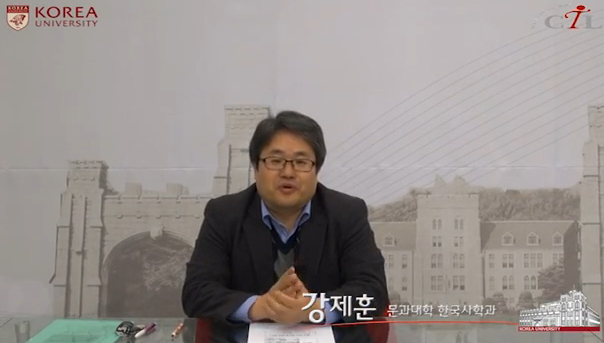본고는 호랑이가 어느 시점에 어떻게 우리나라와 민족을 표상하게 되었는지 그 과정 탐색을 목표로 하였다. 어느 시점에 호랑이가 조선의 표상이 되었을까 하는 문제와 연결하여 주목되는 ...
http://chineseinput.net/에서 pinyin(병음)방식으로 중국어를 변환할 수 있습니다.
변환된 중국어를 복사하여 사용하시면 됩니다.
- 中文 을 입력하시려면 zhongwen을 입력하시고 space를누르시면됩니다.
- 北京 을 입력하시려면 beijing을 입력하시고 space를 누르시면 됩니다.
https://www.riss.kr/link?id=A100825303
- 저자
- 발행기관
- 학술지명
- 권호사항
-
발행연도
2015
-
작성언어
Korean
-
주제어
호랑이 ; 조선(朝鮮)의 신수(神獸) ; 『동아일보』 ; 『소년』 ; tigers ; Joseon ; representation ; Shinsu of Joseon ; icons of Joseon ; 『Donga newspapers』 ; 『Boys』 ; 조선 ; 朝鮮 ; 표상화 ; 表象化
-
KDC
911.05
-
등재정보
KCI등재
-
자료형태
학술저널
-
수록면
13-33(21쪽)
- DOI식별코드
- 제공처
-
0
상세조회 -
0
다운로드
부가정보
국문 초록 (Abstract)
본고는 호랑이가 어느 시점에 어떻게 우리나라와 민족을 표상하게 되었는지 그 과정 탐색을 목표로 하였다. 어느 시점에 호랑이가 조선의 표상이 되었을까 하는 문제와 연결하여 주목되는 글이 있으니, 1926년 『동아일보』에 실렸던 최남선의 「호랑이」 연재 글이다. 최남선은 7차례에 걸쳐 「호랑이」라는 글을 연재했는데 호랑이와 관련된 내용을 모두 모았다. 최남선은 이 글에서 호랑이 이야기를 집대성하고 체계화한 데서 더 나아가, 대놓고 호랑이를 朝鮮의 表象으로 규정하였다. 더하여 최남선은 호랑이가 山神의 權現으로 神性을 가졌다는 것과 고조선 이전부터 호랑이가 우리 민족의 토템으로 숭배 받아 왔다는 점을 들어, 의도적으로 호랑이를 朝鮮의 神獸로 만들기 위해 노력했다. 이로써 조선은 곰이 아니라 호랑이 토템의 나라가 되고, 신성을 가진 호랑이는 朝鮮의 神獸이며 朝鮮의 表象으로의 지위를 획득하게 된다. 호랑이를 조선의 神獸이며 조선의 表象으로 만든 것이 최남선 개인이라고 단정하기는 조심스럽다. 그러나 최남선의 이 7편 「호랑이」 글이 그간 흩어져 있던 호랑이 관련 이야기를 한 자리에 모았고, 호랑이는 朝鮮表象이라는 관념을 정립하는 데 상당한 역할을 했다는 것은 분명해 보인다. 지면이 “신문”이었다는 점도 간과되어서는 안 될 것이다. 더구나 최남선의 이러한 호랑이 조선표상화 노력은 1926년 『동아일보』의 「호랑이」 글뿐만 아니라, 1908년부터 최남선이 창간하였던 여러 잡지의 글이나 표지에 호랑이를 등장시키는 등 지속적으로 이루어졌다. 1903년 고토 분지로가 한반도의 토끼 형상론을 주장한 이후 최남선은 한반도 호랑이 형상론을 주장했고, 1912년~1926년까지 일본에서 호랑이 말살 정책을 펼 때 최남선은 잡지와 신문을 통해 神獸 호랑이의 朝鮮表象化를 추진하였다. 일본이 조선을 상징하기 위해 害獸 호랑이를 내세웠다면, 최남선이 조선을 표상하기 위해 내세운 호랑이는 포효하는 호랑이로 조선의 긍정적 기운을 상징하는 神獸였다. 이때 호랑이는 조선에서 역대로 숭배 받아온 피邪의 상징이고 守護의 상징이며 山神의 권현인 호랑이다. 이처럼 호랑이를 일본에 대한 저항의 표현이며 조선에 대한 긍정적 기운으로 사용한 시초는 1908년 『소년』 창간호에 최남선이 그린 호랑이 형상의 한반도 그림이라 할 수 있다. 더하여 호랑이를 조선이라는 나라와 연결시켜 호랑이는 朝鮮表象이라 한 데에는 1926년 최남선의 『동아일보』 연재 글 「호랑이」의 영향이 컸다고 하겠다.
다국어 초록 (Multilingual Abstract)
This paper researched when and how tigers had represented our country, then it researched the representation courses. The noting articles related that when tiger become an icon of Joseon was the newspaper series 「Tiger」 written by Choi Namseon. He...
This paper researched when and how tigers had represented our country, then it researched the representation courses. The noting articles related that when tiger become an icon of Joseon was the newspaper series 「Tiger」 written by Choi Namseon. He gathered whole contents related tigers and published serially the article 「Tiger」 through seven times. Choi Namseon collected and systematized stories of tigers, then he defined the tiger as the icon of Joseon. He tried to make tigers to Shinsu(sacred animal) of Joseon being founded on that tigers have the holy(神性) from authority of Taoists(山神) and that tigers have been worshiped by our people from Gojoseon(古朝鮮). Therefore Joseon was become a nation of not bears but tigers totem, tigers containing sacred gained a position as Shinsu(神獸) of Joseon and icons of Joseon. It was uncertain that Choi Namseon made tigers as Shinsu and icons of Joseon. However it was certain that he gathered stories of tigers scattered in several materials and contributed to set up a conception that tigers are icons of Joseon. In addition, he published serially stories of tigers on the newspaper. This point is not overlooked. These Choi Namseon`s efforts of Joseon representation with Tigers were consistently conducted not only 「Tiger」 written in Donga newspapers but also entering tigers in covers or articles in several magazines published by Choi Namseon since 1908. After Goto Bunjiro insisted rabbit shape for the Korean Peninsula in 1903, Choi Namseon insisted on tiger shape for the Korean Peninsula, while Japan carried out a policy on annihilation of tigers from 1912 to 1926, Choi Namseon propelled Joseon representation of Shinsu tigers through magazines and newspapers. While Japan used tigers as harmful animals for symbolizing Joseon, Choi Namseon propounded tigers that they roared and indicated positive atmosphere of Joseon for symbolizing Joseon. These tigers were that they symbols of driving away evil spirits, protection and authority of Taoists. Likewise, the picture of tiger shape for the Korean Peninsula in first issue of 『Boys』(少年) at 1908 was initially used for expression of resistance against Japan and atmosphere of Joseon, the series articles of 「Tiger」 in Donga newspapers vastly influenced calling “tigers are Joseon” related tigers with Joseon.
동일학술지(권/호) 다른 논문
-
- 한양대학교 동아시아문화연구소(구 한양대학교 한국학연구소)
- 나카이마키
- 2015
- KCI등재
-
- 한양대학교 동아시아문화연구소(구 한양대학교 한국학연구소)
- 배관문 ( Kwan Mun Bae )
- 2015
- KCI등재
-
방정환의 번안시 「어린이노래-불 켜는 이」 연구 -원작 로버트 루이스 스티븐슨의 「The Lamplighter」, 일본어 번역본 「點火夫」와의 비교 연구를 중심으로-
- 한양대학교 동아시아문화연구소(구 한양대학교 한국학연구소)
- 염희경 ( Hee Kyung Yeom )
- 2015
- KCI등재
-
- 한양대학교 동아시아문화연구소(구 한양대학교 한국학연구소)
- 이익성 ( Ick Seong Lee )
- 2015
- KCI등재





 KCI
KCI KISS
KISS




